
Over the years, the picture quality from phone cameras has begun to rival that of even the most capable and expensive point-and-shoot cameras. With a bit of tweaking, one can even be fooled into thinking that a beautiful landscape, or intimate portrait, quickly captured on a phone, was taken using a DSLR.
But dedicated cameras still have one major advantage: replaceable lenses. Despite the proliferation of dual (and soon tri-) camera phones, phones are still held to the limitations of physics, making optical zoom impractical. Some companies, like ASUS and, previously, Nokia, have found innovative ways around this problem, but the reality is that one can't have a thin-and-light smartphone with a bulky, mechanized zoom lens.
Enter the lens adapter.
The idea of augmenting a phone's single wide-angle lens with add-on lenses is not new, but the choices have traditionally either been extremely expensive or fundamentally flawed. Rhinoshield, which started out making bumpers for popular phones, recently released a line of modular cases that include support for four lenses of various focal length (and glass of varying quality, as we'll learn), and compared to the competition, the price is definitely right.
I'm taking a look at the Pixel 2-specific version, but these lenses work on any compatible RhinoShield case, and I'm happy to say the result was as positive as the experience.
A look at the case
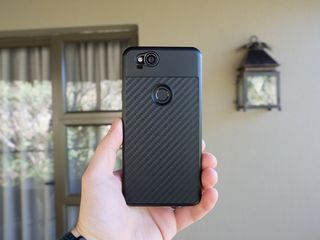
RhinoShield's SolidSuit case is pretty traditional as far as plastic cases go. It has a cushioned, textured interior, a solid polycarbonate outer shell (though in one piece, unlike, say, Otterbox's Commuter series), and a lovely textured back.
The ring around the perimeter extends well past the screen itself, protecting the Pixel 2's Gorilla Glass from any unfortunate drops.
It's a decent case, well made but a little bulky — not one I would ordinarily use on my phone, but I was going away for three weeks and wanted a little more insurance for a device that would be my lifeline to the world.

The case itself does not come with any means of attaching RhinoShield's lenses; it requires an adapter, which adds threading to allow the lenses to securely screw over the phone's camera module.
I despaired over this initially, since the average person isn't going to be enthused about requiring a small, easily lost piece of plastic to merely be able to use the lenses, but once installed it doesn't impede the use of the camera and tucks away nicely into the case's overall design.
Pick it up for just under $35 — a decent deal for a very good case.
The lenses
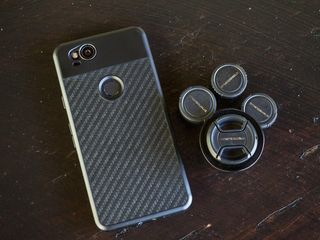
RhinoShield sent me the four lenses currently available to use with its case-and-adapter system:
- 0.4x ultra-wide lens
- 180-degree fisheye lens
- 0.65x wide lens + macro (2-in-1)
- This is of much higher quality than the others, and is considerably larger and heavier. It also produces sharper photos with less corner distortion.
It's clear from RhinoShield's strategy – the line lacks a telephoto option – that it's trying to keep things as simple as possible. It's cheaper and easier to make a series of wide lenses than a zoom due to the latter's size requirements, and the variety in RhinoShield's current lineup should satisfy most use cases.
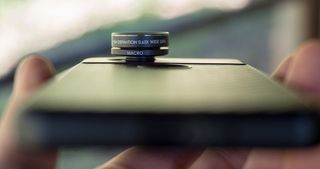
My "daily driver", so to speak, the one I ended up using the most, was the 2-in-1, since I found 0.65x to be a nice compromise between capture area and distortion, while the macro feature, which is accessed by unscrewing the outer half of the lens itself, came in handy more often than I thought. I also didn't notice the weight on the back of my Pixel, and in a pinch, the combination could even fit in my pocket.
The 0.4x ultra-wide was fun, but too wide for most instances, and not silly enough to evoke the same responses from people as the fisheye. I tended to preview the 0.4x for video, since the Pixel, in order to achieve its excellent stabilization, crops the capture area significantly.
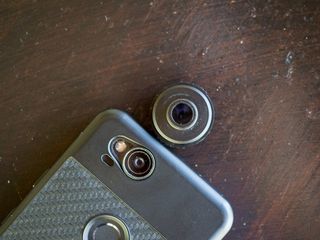
The fisheye was… a fisheye. It's fun but absurd and I only used it a couple of times before yearning for a more practical solution.
Perhaps the most interesting and frustrating of the lenses was the 0.6x HD lens — considerably larger than any of the others, but failing to alleviate corner distortion and fringing as promised in the marketing material.
0.65x wide & macro 2-in-1 lens

My favorite lens, the 2-in-1 combo has a 0.65x magnification by default, coupled with a macro setting that's accessed by screwing off the main lens component. The small size coupled with the versatility makes it extremely easy to use, and at $25, it's definitely the best value among the lenses.




Pick it up for $24.99.
Use case: Everyday wide-angle capture and versatile macro photos. If you can only carry one, leave the others at home.
0.4x Superwide lens
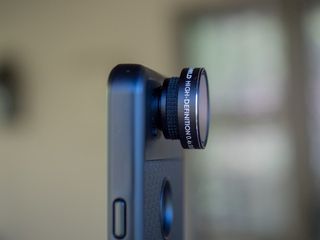
The 0.4x lens distorts a ton, but that's on purpose — while we're not at fisheye level here, we're still using it to expand the capture area and almost comically distort any subjects in the photo. Objects captured in the center aren't entirely free of optical games, but when in the sweet spot they do look clear enough. Anything on the edges... well, that's another story.



Get it for $34.99.
Use case: Capturing as much in the frame as possible while taking advantage of the Pixel 2's excellent processing.
Fisheye lens
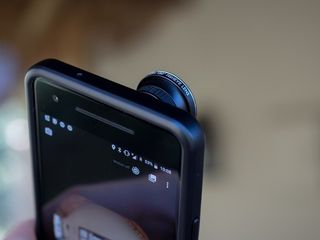
The fisheye is the "globe" lens, creating an effect that should be familiar to anyone who's used a 360-degree camera before. The effect exaggerates everything in the frame, and it's almost impossible to pinpoint a particular subject, but fisheye makes for an interesting effect that can be a lot of fun if used properly.



Pick it up for $24.99.
Use case: Fun, and not much else.
0.6x HD wide-angle lens
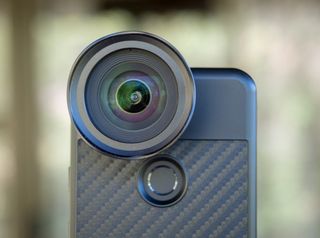
As impressively heavy and well-built as RhinoShield's $59.99 HD wide-angle lens is —and it certainly looks imposing on the back of the Pixel 2 — this one impressed me the least. Not only did the lens not live up to the claim that it "captures incredibly sharp wide-angle images with practically no distortion," but it had significantly more distortion, to the point where some of the photos were not usable than the cheaper, smaller lenses.



Still, the 0.6x magnification is just right for many landscape photos, and with a tripod, this lens could churn out great photos.
Use case: Improved low-light photography and looking impressive with a big lens on the back of the phone.
What's your take?

RhinoShield's entry into the case and lens adapter market is impressive mainly for the quality of product you get for the price. While not all of the offerings are worth the money, picking up, these are compelling, easy-to-use additions to a phone, and a camera, that is among the best on the market.
Be an expert in 5 minutes
Get the latest news from Android Central, your trusted companion in the world of Android
